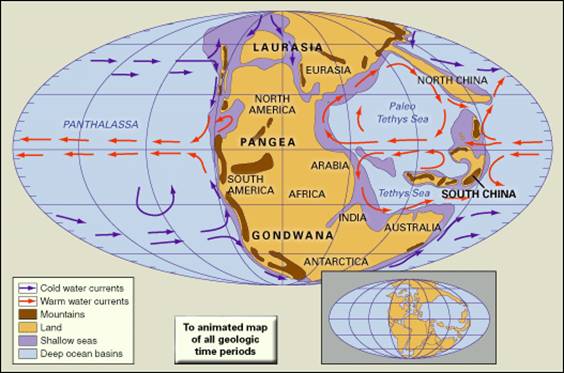
home
| The Permian-Triassic Boundary: Paleoceanography |
|
Towards the end of the Permian, the ocean’s chemistry had become anoxic and sulphidic, as indicated by the presence of black shales and framboidal pyrite. (Nielsen and Shen, 2004) Because of the size of Panthalassa, oceanic currents can be, in theory, plotted fairly simply using large single gyres in each hemisphere. This configuration would establish a large East to West temperature gradient, with a permanent westerly equatorial current. (Scotese, 2001) Such a westerly current would have supplied warm water to the Tethys, enabling reefs to develop there. The existence of this current can be seen by proxy through the existence of Tethian reef complexes of Triassic age on the Great Bank of Guizhou, in Southern China. (Payne, 2005) |
|
